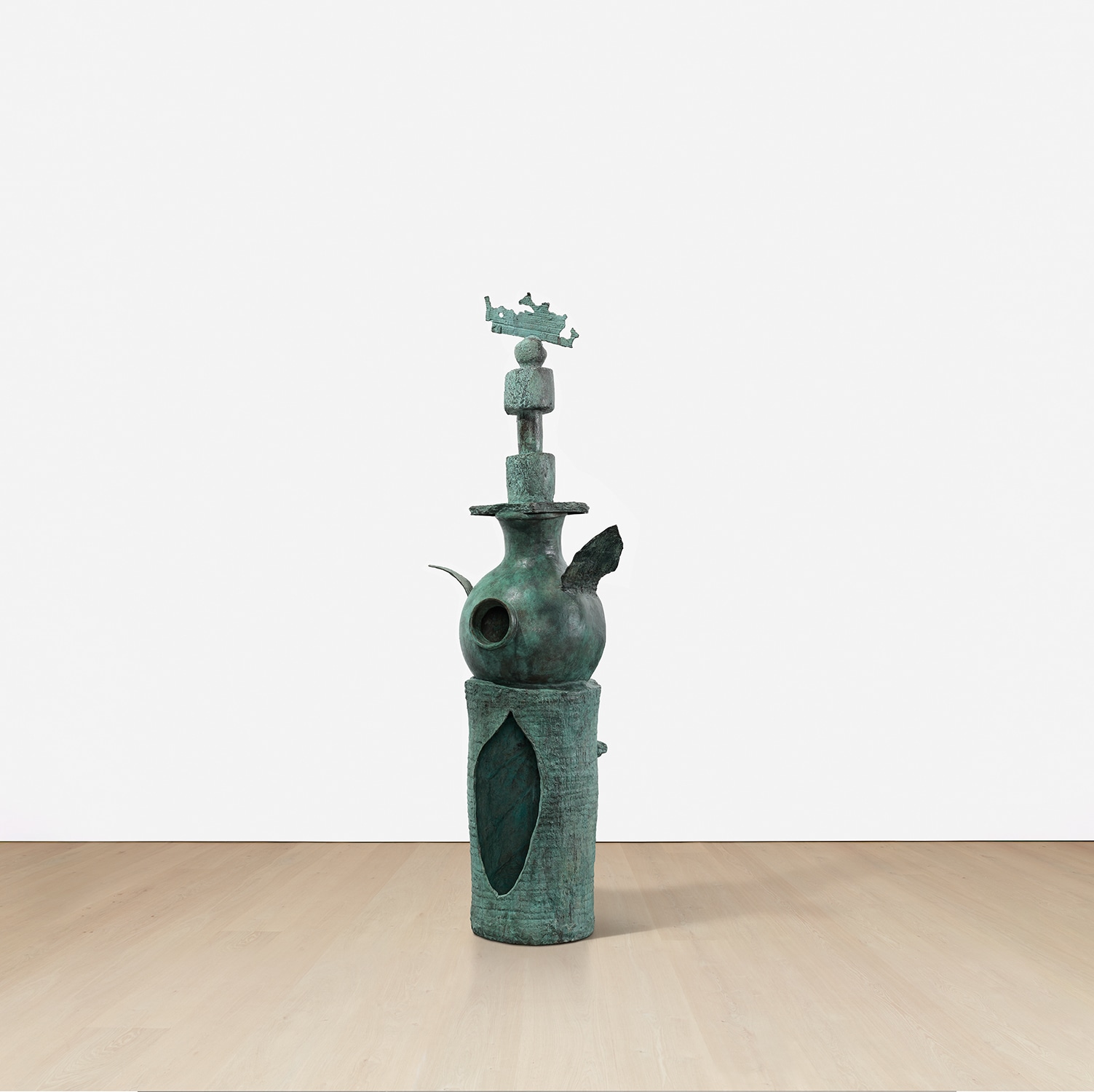





39
Joan Miró
Femme et oiseau
incised with the artist’s signature, number and stamped with the foundry mark “Miró 2/2” Fonderie T. Clementi, Meudon on the reverse
bronze
68 x 20 1/4 x 17 3/4 in. (172.7 x 51.4 x 45.1 cm)
Conceived in 1971 and cast during the artist's lifetime by Fonderie T. Clementi, Meudon, this work is number 2 from an edition of 2 plus 1 nominative cast.
The nominative cast is housed in the permanent collection of the Fondation Maeght, Saint-Paul-de-Vence.
The nominative cast is housed in the permanent collection of the Fondation Maeght, Saint-Paul-de-Vence.